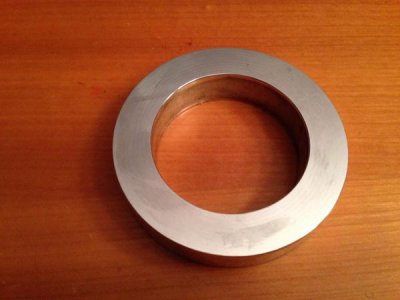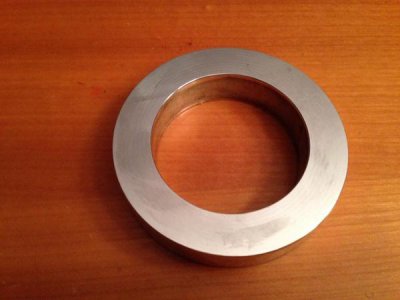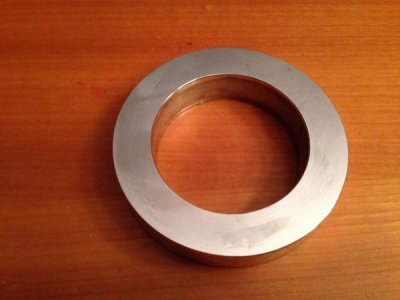- Joined
- Nov 27, 2012
- Messages
- 7,912
consider where the "press forces" are going when you push down onthe jaws. thru the threaded half parts that the outer sleeve is actually press fit on. if you press on the nose of the tool, the forces are in a different place related to the threaded half parts. . . trying to pull the innards from the sleeve instead of pushing them out. or do i need more coffee ? ? ?
Yup, I did think about it after disassembling the first one. Pressing on the jaws as recommended, the force is through the jaws to the jaw scroll rings. But by pressing on the nose it seems the force would be through the body (opposite end of the nose) to the jaw scroll rings, that is depending on how far down you run the jaws, I backed the jaws down, then ran them up slightly so the rings would contact the body under the nose. The jaw scroll rings is what the sleeve is pressed onto. So I'd rather press on the body instead of the jaws.
On certain sizes of Jacobs chucks, if you retract the jaws all the way, you will damage the tail end of the chuck jaw. I know this for a fact, I've damaged the jaws on a chuck because I retracted the jaws all the way.
Thanks for confirming, I figured that may be the case. After seeing the internals, what I did on the second & third was retract the jaws all the way, then ran them back up until they were just below the nose face. That way the ring would contact the body opposite of the nose & the jaws would not be bottomed out.
Again I don't think the jaws would have been damaged by pressing directly on them but doing it the way I did seems to be fine.
Great write up, thanks.
Where do I get replacement jaws for my Jacobs 16n Super Chuck BB? How much?
What did you use as a cleaning solvent and how did you polish the metal?
Btw, I don't think all of the USA made 16n Jacobs chucks have Hartford, Conn. stamped on them.
I'll fact check this more.
Thanks. As mentioned by 110octane, Enco no longer carries these parts, MSC still lists them but they have been "out of stock" for a very long time. I was able to find NOS on ebay. Not sure about 16N parts.
Yup, that's what I understand too, only the older ones say Hartford on them, & older than that have the older style looking sleeve on them. I believe later ones just say "Made in USA" (no Hartfor Conn), and later than that just Jacobs USA, not "Made in the USA".
I believe the ones that just say Jacobs USA on them are the ones that are iffy & are during the transition, some made in the USA, some not. The ones that list a SVC Kit # (which are the current ones being made) on the nose are the ones that are made in China or wherever offshore. As I understand it, these service kit parts are not interchangeable with the older models.
I just mentioned what I have in case someone trying to follow this had a model that was different internally. Never seen the newer ones so I'm not sure what is different if anything.



